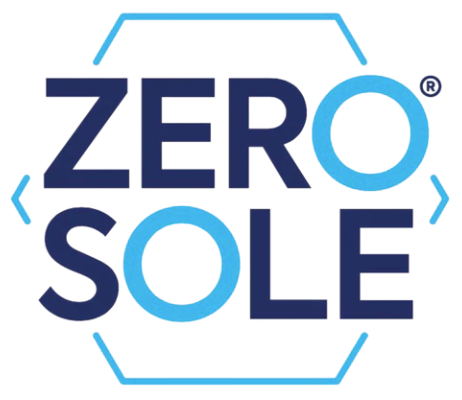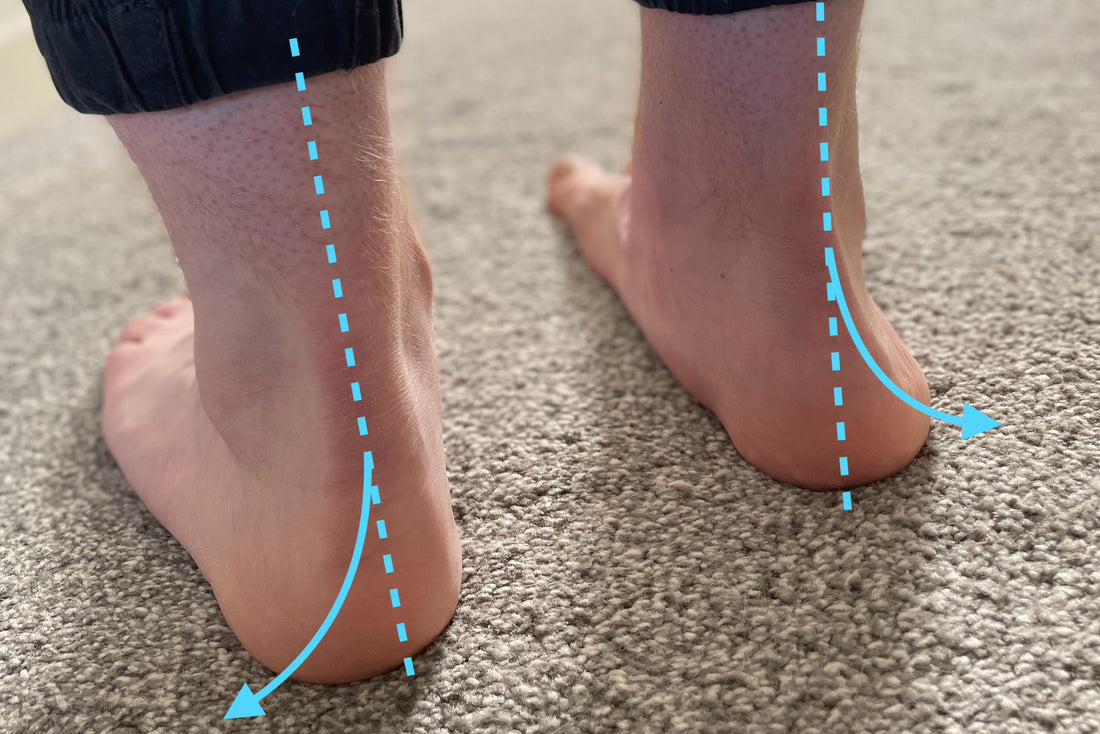Heard of the term ‘overpronation’ but unsure what this means? Or concerned that you may be overpronating and unsure what to do about it? Here we explain the ins and outs of overpronation, and how to know if your foot pain is linked to overpronation.
What is overpronation?
Pronation describes the “rolling in” motion that occurs through your feet while standing, walking or running. This inward rotation can cause the arches of our feet to flatten, giving the appearance of flat feet. A degree of pronation is a normal part of foot function, which can help our feet to absorb shock whilst we go about our day-to-day activities. However, when feet roll in, or pronate excessively (overpronation), this can lead to a variety of symptoms and conditions. This is due to the additional strain which can be placed onto various muscles, tendons and ligaments within your feet when they are in an overpronated position. Common symptoms and conditions associated with overpronation include:
- Heel pain: The excessive inward roll can lead to discomfort in the bottom of the heel or under the arch of the foot. Heel pain may be worse first thing in the morning when you take your first few steps of the day, a common symptom of plantar fasciitis.
- Flat feet (also known as fallen arches): You may notice a flattening of the arch of your foot, which can be observed when standing. Sometimes this can be accompanied by pain in the inner side of your foot and ankle, which is often due to overuse of the Tibialis Posterior tendon (also known as Tibialis Posterior tendonitis or Adult Acquired Flat Foot).
- Corns or calluses: These may develop due to changes in pressure distribution across the foot (typically observed on the ball of the foot and the first toe).
- Knee, hip, or back pain: Misalignment, caused by overpronation, can lead to pain in the knees, hips, or lower back, contributing to wear and tear of these joints.
Causes of overpronation
Overpronation is primarily caused by mechanical changes in the foot, such as low or flexible arches. Several factors can contribute to the development of overpronation:
- Genetics: Some people are born with flat feet or low arches, predisposing them to over-pronation.
- Injury: Damage to the tendons that support the arches of your feet, such as the tibialis posterior tendon, can lead to overpronation due to lengthening and weakening of these structures.
- Obesity: Excess body weight can put additional stress on the arches, causing them to lengthen and flatten over time.
- Pregnancy: Hormonal changes and weight gain during pregnancy can contribute to over-pronation.
- Repetitive activities: Activities such as running on hard surfaces can exacerbate overpronation due to repetitive stresses placed on the structures that help to support the feet, causing them to fatigue and weaken over time.
Treating and preventing overpronation
While it may not be possible to entirely prevent overpronation, certain treatments and preventative strategies can help minimise its impact:
- Orthotic insoles: Over-the-counter insoles can provide shock absorption and additional arch support to help improve foot alignment. If you are already suffering from heel pain or ball-of-foot pain as a result of overpronation, specialist pressure-relieving insoles, such as the ZeroSole Reliever insole can be customised to reduce pressure at the targeted site of pain. To learn more about the different types of insoles and how they work, click here.
- Supportive footwear: Shoes with strong heel counters, dense midsoles, secure fastenings and a wide base can help stabilise the foot and prevent excessive inward rolling of the foot.
- Physical therapy: Exercises that strengthen the arches and surrounding muscles can improve foot stability and reduce symptoms, such as: (1) using your toes to grip or pick up small objects, such as a hand towel or some marbles; and (2) performing calf raises. Additional exercises can be given to you by your podiatrist to help with your recovery if you have suffered an injury relating to overpronation.
- Weight management: Maintaining a healthy weight can reduce stress on the connective tissue within your feet and alleviate symptoms
- Pain relief: Over-the-counter pain and inflammatory medications may help manage discomfort associated with over-pronation which can be purchased from your local pharmacy
- Monitor foot health: Regularly check the wear pattern on your shoes and the condition of your feet to identify early signs of over-pronation.
By implementing these strategies, individuals can manage over-pronation effectively, reducing the risk of associated injuries and maintaining overall foot health.

